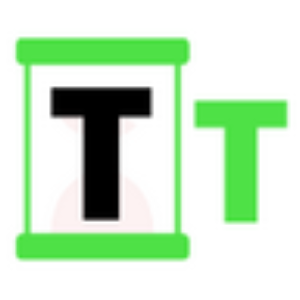Market Pulse
Grayscale, a titan in digital asset management, has reportedly launched a new Ethereum staking product, potentially valued at $150 million. This strategic move marks a significant expansion of institutional engagement with the Ethereum ecosystem, extending beyond mere spot exposure to actively participating in the network’s security and yield generation. Coming at a time when traditional finance grapples with integrating digital assets, this development could catalyze a fresh wave of institutional capital into Ethereum, reshaping market dynamics and further solidifying ETH’s position as a cornerstone of the decentralized economy.
Grayscale’s Strategic Deep Dive into Ethereum Staking
Grayscale’s foray into Ethereum staking is not merely another product launch; it represents a pivotal evolution in how institutional investors approach digital assets. Previously, institutional interest largely concentrated on Bitcoin spot products, spurred by recent ETF approvals. However, this new offering for Ethereum allows accredited investors to not only gain exposure to ETH’s price appreciation but also to earn staking rewards, providing a more comprehensive investment thesis. The reported initial capital of $150 million signals robust confidence from early investors and sets a precedent for broader institutional adoption of yield-generating crypto assets.
- Enhanced Investment Appeal: Combines direct ETH exposure with passive income generation.
- Diversification Beyond Bitcoin: Offers institutions a clearer path to diversify their digital asset portfolios.
- Accredited Investor Focus: Currently targets sophisticated investors, indicating a measured, compliant entry into the staking market.
Understanding the Mechanics of Ethereum Staking for Institutions
Ethereum staking involves locking up ETH to participate in the network’s proof-of-stake consensus mechanism, which validates transactions and secures the blockchain. In return, stakers receive rewards in new ETH. For institutional players, directly managing staking infrastructure can be complex, requiring significant technical expertise, operational overhead, and security measures. Grayscale’s product simplifies this by acting as an intermediary, handling the technical intricacies and regulatory compliance, thereby lowering the barrier to entry for large-scale investors.
This managed approach is crucial for institutions that prioritize security, liquidity, and regulatory clarity. By abstracting away the operational complexities, Grayscale enables these investors to benefit from Ethereum’s intrinsic yield without needing to build and maintain their own staking infrastructure. This could be a game-changer for endowments, hedge funds, and family offices looking for regulated avenues into the DeFi yield landscape.
Potential Impact on the Ethereum Ecosystem and Price
The influx of institutional capital into Ethereum staking could have multifaceted impacts. Firstly, increased staking activity directly enhances the security and decentralization of the Ethereum network by adding more validators. Secondly, the locking up of significant ETH for staking purposes reduces its circulating supply, which, assuming stable or rising demand, could exert upward pressure on its price. Analysts anticipate that as more institutions recognize the dual benefits of capital appreciation and staking yield, demand for ETH could see a sustained boost.
- Increased Network Security: More staked ETH strengthens the network’s resilience against attacks.
- Reduced Circulating Supply: ETH locked in staking contracts decreases market supply, potentially impacting price positively.
- Broader Market Legitimacy: Grayscale’s involvement lends significant credibility to Ethereum’s utility and long-term viability as an investment asset.
Broader Implications for the Crypto Market
While immediately bullish for Ethereum, Grayscale’s move has wider implications for the entire crypto market. It signifies a growing sophistication in institutional digital asset strategies, moving beyond simple Bitcoin exposure to more nuanced, yield-generating assets. This could pave the way for similar institutional products across other proof-of-stake blockchains, opening new frontiers for capital deployment and legitimizing a broader spectrum of altcoins.
Furthermore, it highlights a maturing regulatory landscape where complex financial products built on decentralized technologies are finding acceptance. This trend suggests that as digital asset markets continue to evolve, institutional participation will likely deepen, driving innovation and stability across the entire crypto ecosystem. The focus on yield generation could also make crypto assets more appealing in a diversified investment portfolio, especially in a low-interest-rate environment.
Conclusion
Grayscale’s reported launch of a $150 million Ethereum staking product marks a seminal moment for institutional crypto adoption. By offering a regulated and simplified pathway to both ETH exposure and staking rewards, Grayscale is effectively lowering the barriers for traditional finance to engage more deeply with the Ethereum network. This development is poised to bolster Ethereum’s security, potentially influence its market price positively, and set a precedent for future institutional involvement in yield-generating digital assets across the wider crypto landscape. As the crypto market matures, such initiatives are crucial for bridging the gap between innovative blockchain technology and traditional financial markets, promising a more integrated and robust digital economy.
Pros (Bullish Points)
- Legitimizes and simplifies Ethereum staking for traditional financial institutions.
- Could drive substantial new institutional capital and demand into the ETH ecosystem.
Cons (Bearish Points)
- Potential for increased centralization concerns if staking power becomes too concentrated among large entities.
- May invite heightened regulatory scrutiny on managed staking services and their compliance frameworks.



